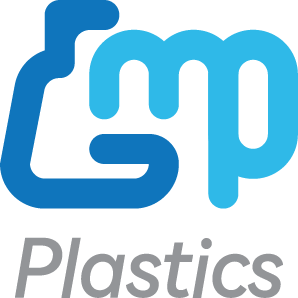Nucleic acid purification is the process of isolating pure DNA or RNA from cells, tissues, or biological samples. But why do we need pure DNA or RNA?
✔️ Genetic Research – Scientists study DNA and RNA to understand genes, mutations, and heredity.
✔️ Medical Diagnostics – PCR tests for viruses (like COVID-19) rely on purified nucleic acids.
✔️ Forensics & Ancestry Testing – DNA purification is key to solving crimes and tracing family trees.
✔️ Biotechnology & Drug Development – Used to develop vaccines, gene therapies, and more.
Without high-quality nucleic acid purification, none of these advances would be possible!
The Science Behind Nucleic Acid Purification 🔬
So how do scientists separate DNA and RNA from the rest of the cell? The process involves three key steps:
Step 1: Breaking Open the Cells (Lysis) 💥
The first challenge is getting to the DNA and RNA inside the cell. This means breaking open the cell membrane using:
🧪 Detergents & Enzymes – Chemicals that dissolve cell walls and membranes.
🧪 Mechanical Disruption – Bead beating, sonication, or grinding to physically break cells open.
Once the cell is open, its contents spill out, leaving us with a mix of DNA, RNA, proteins, and debris.
Step 2: Removing Unwanted Materials 🚫
Now that we’ve freed the nucleic acids, we need to separate them from everything else—like proteins, lipids, and cell fragments.
🧬 Enzymes like Proteinase K – Breaks down proteins that interfere with purification.
🧬 Organic Solvents (Phenol-Chloroform Method) – Dissolves unwanted materials while keeping DNA/RNA intact.
🧬 Column-Based Filtration – Uses special filters to trap nucleic acids while washing away impurities.
Step 3: Isolating & Purifying DNA or RNA 🧪
Once the nucleic acids are separated, they need to be precipitated and purified to get rid of any lingering contaminants. Scientists use:
🧲 Magnetic Beads – Tiny beads attract DNA or RNA, allowing for easy separation.
🌀 Centrifugation – Spinning the sample at high speeds to pull out nucleic acids.
🍸 Ethanol Precipitation – Using alcohol to clump DNA or RNA together for collection.
After these steps, voilà! We have pure, high-quality nucleic acids ready for research! 🎉
Common Methods for Nucleic Acid Purification 🏆
There are many different techniques to purify DNA and RNA, each with its own strengths. Let’s check out some of the most popular methods used in labs today!
1. Phenol-Chloroform Extraction 🧪
This classic method is one of the oldest and most widely used techniques.
🔹 How it Works: A mixture of phenol and chloroform separates DNA/RNA from proteins and fats into different layers.
🔹 Pros: Produces high yields, works on many sample types.
🔹 Cons: Uses toxic chemicals, requires extra safety precautions.
2. Silica-Based Column Purification 🏆
This method uses spin columns with silica membranes that bind nucleic acids while washing away impurities.
🔹 How it Works: DNA or RNA sticks to the silica column, and contaminants are washed away with buffers.
🔹 Pros: Fast, simple, and produces high-purity samples.
🔹 Cons: More expensive than organic methods.
3. Magnetic Bead-Based Purification 🧲
A modern, high-tech approach that uses magnetic beads coated with DNA- or RNA-binding molecules.
🔹 How it Works: Beads capture nucleic acids, and a magnet pulls them out, leaving impurities behind.
🔹 Pros: Highly efficient, automation-friendly, and scalable.
🔹 Cons: Requires specialized magnetic equipment.
4. Anion-Exchange Chromatography 🔬
A lesser-known but powerful technique that separates nucleic acids using charged columns.
🔹 How it Works: DNA or RNA binds to a column based on charge, then is washed and eluted.
🔹 Pros: Extremely high purity, great for large-scale applications.
🔹 Cons: More complex and expensive than other methods.
Challenges in Nucleic Acid Purification (And How Scientists Solve Them!) 🤯
Even though purification techniques are powerful, there are still some tricky challenges that scientists face:
❌ RNA Degradation: RNA is highly unstable and easily breaks down due to RNases.
✅ Solution: Work in RNase-free environments and use stabilizing reagents.
❌ Low DNA/RNA Yields: Sometimes, the amount of nucleic acid recovered is too small for experiments.
✅ Solution: Use optimized extraction kits and bead-based methods to increase recovery.
❌ Contaminants (Proteins, Salts, & Chemicals): Impurities can interfere with PCR, sequencing, and gene expression studies.
✅ Solution: Extra purification steps like ethanol washes or DNase/RNase treatments help remove unwanted materials.
Why Nucleic Acid Purification is a Game-Changer in Science! 🌍
Purifying DNA and RNA isn’t just an academic exercise—it’s critical for major breakthroughs in medicine, research, and technology!
✔️ Genetic Engineering & CRISPR – Scientists edit genes to fight diseases and improve crops.
✔️ Cancer Research – Studying gene mutations helps develop targeted therapies.
✔️ Vaccine Development – RNA purification is essential for mRNA vaccines like those for COVID-19.
✔️ Forensic Science – DNA purification helps solve crimes and identify unknown individuals.
Every biotech innovation starts with pure nucleic acids—so this process is literally shaping the future of science! 🚀
Final Thoughts: Nucleic Acid Purification is the Key to Unlocking Life’s Secrets! 🔬✨
From ancient methods to cutting-edge technology, nucleic acid purification has revolutionized how we study DNA and RNA. Whether we’re developing vaccines, diagnosing diseases, or exploring the secrets of life, it all starts with pure genetic material!
So next time you hear about genetic research, forensic breakthroughs, or medical advances, remember—it all begins in the lab with a little science magic and a whole lot of nucleic acid purification! 🎉🧬




